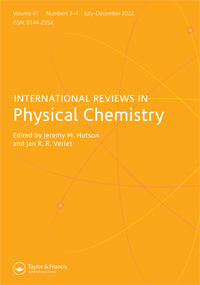NBO分析是什么?它有什么用处?
IF 2.5
2区 化学
Q3 CHEMISTRY, PHYSICAL
引用次数: 384
摘要
自然键轨道(NBO)分析是将Schrödinger波动方程的计算解“翻译”为熟悉的化学键概念语言的许多可用选项之一。在这篇综述中,我们首先通过描述区分NBO与其他分析方法(例如QTAIM或EDA类型)的特征来解决标题问题,并回答在特定化学应用中提出的批评。然后,我们在广泛接受的哲学标准背景下讨论NBO分析的一般“有用性”,包括(i)内部和已知实验数据的广泛一致性,(ii)多方面的预测能力,包括特定属性的数值模型预测,一般相关和统计回归关系,以及对先前未知化学现象的“风险”可证伪预测,以及(iii)一般的教学价值。促进化学知识的组织、统一和有序合理化。选择讨论的特定化学主题包括海湾型烃物种中有争议的H⋯H '键线';铸币金属的卡宾结扎;稀有气体氢化物的共振型键合;hammet型定量构效关系中的NBO描述符常规和“反静电”氢键相互作用的性质“芳香族”中的多中心键、非vsepr几何形状的类刘易斯杂化图和过渡金属物种中的高阶多键;“18e规则”的共振起源以及自由基化学中jann - teller效应的局域(不依赖于对称)预测。最后给出了NBO方法未来扩展的一些方向。本文章由计算机程序翻译,如有差异,请以英文原文为准。
What is NBO analysis and how is it useful?
Natural bond orbital (NBO) analysis is one of many available options for ‘translating’ computational solutions of Schrödinger’s wave equation into the familiar language of chemical bonding concepts. In this Review, we first address the title questions by describing characteristic features that distinguish NBO from alternative analysis methodologies (e.g. of QTAIM or EDA type) and answering criticisms that have been raised in specific chemical applications. We then address the general ‘usefulness’ of NBO analysis in the context of widely accepted philosophical criteria, including (i) broad consistency, both internally and with respect to known experimental data, (ii) multi-faceted predictive capacity, including numerical model predictions of specific properties, general correlative and statistical regression relationships, and ‘risky’ falsifiable predictions of previously unknown chemical phenomena, and (iii) general pedagogical value, promoting organisation, unification, and orderly rationalisation of chemical knowledge. Specific chemical topics chosen for discussion include controversial H⋯H ‘bond lines’ in bay-type hydrocarbon species; carbene ligation of coinage metals; resonance-type bonding of noble gas hydrides; NBO descriptors in Hammett-type quantitative structure-activity relationships; nature of conventional and ‘anti-electrostatic’ hydrogen bonding interactions; multi-centre bonding in ‘aromatic’ , Lewis-like hybridisation picture of non-VSEPR geometry and high-order multiple bonding in transition metal species; resonance origin of the ‘18e rule’; and localised (symmetry-independent) prediction of Jahn–Teller effects in free radical chemistry. We conclude with hints of some directions for future extensions of NBO methods.
求助全文
通过发布文献求助,成功后即可免费获取论文全文。
去求助
来源期刊
CiteScore
14.20
自引率
1.60%
发文量
5
审稿时长
1 months
期刊介绍:
International Reviews in Physical Chemistry publishes review articles describing frontier research areas in physical chemistry. Internationally renowned scientists describe their own research in the wider context of the field. The articles are of interest not only to specialists but also to those wishing to read general and authoritative accounts of recent developments in physical chemistry, chemical physics and theoretical chemistry. The journal appeals to research workers, lecturers and research students alike.

 求助内容:
求助内容: 应助结果提醒方式:
应助结果提醒方式:


